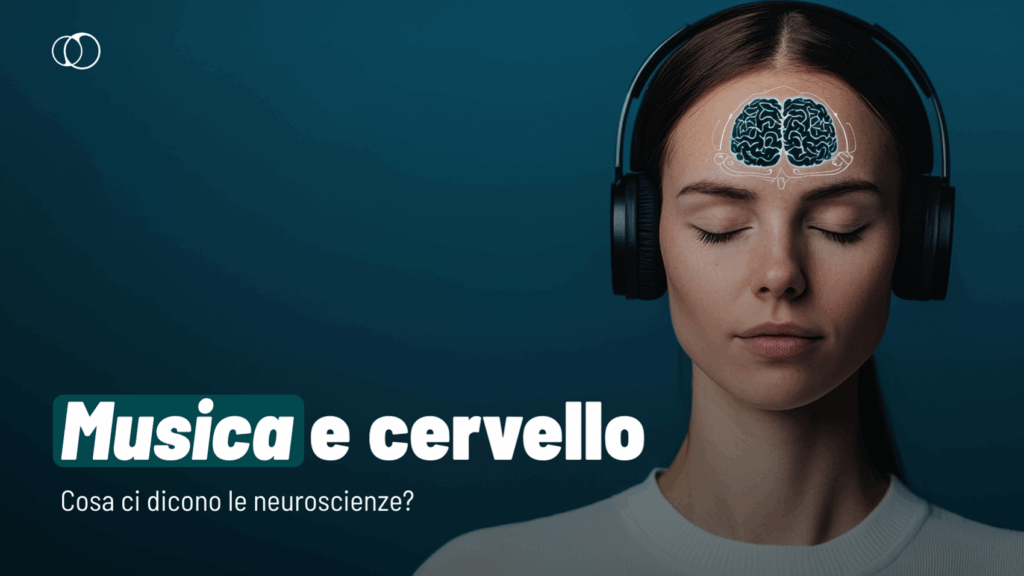
Musical experience: how music activates emotions and brain
Listen musica It is a common, pleasant and daily action, which is always accompanied by the elimination of intense and of various kinds: from the nostalgia that assails us when they resurface some memories, up to the sadness, to adrenaline, to the joy and the sense of peace and relaxation that originates from the magical combination of sounds, melodies and words. During this process so natural and obvious, however, complex cerebral mechanisms are triggered that allow each of us to experience the musica in a unique and powerful way, with interesting effects on the bioelectric oscillations of ours brain.
Ear’s auditory system and anatomy
Neurosciences represent an avant -garde field and their application to research on the perception and impacts of the musica It is undoubtedly a curious, fascinating and very stimulating adventure.
Before investigating the biological basis of musical perception and its effects on brain And on our psychophysical state, however, it is important and necessary to take a step back and deepen the anatomy of the sensory body responsible for detecting sound (i.e. the sound waves that move in space) and therefore of auditory perception: theear. The most visible part, theexternal earis first constituted by auricular pavilion (o pinna), in which the sound channeks before continuing in hearing channel that sound waves must cross to reach the tympanic membranemore commonly called eardrum. The vibration of this membrane caused by the passage of sound waves is then transmitted to the so -called medium eara quarry region containing 3 ossicles: il hammerl’anvil and the bracket. The latter is responsible for transmitting vibrations toinner earwhere the sound is finally converted into neural signal. The most important structure of the internal ear is the cochleaa sort of spiral cylinder and filled with a liquid to which vibrations are transferred. It is divided into three sections and includes theorgan of the Corti, That is the main auditory receptor organ consisting of two membranes (ceiling and basic membrane membrane) and auditory receptor cells (ciliated cells).
Music: a special form of auditory perception
The perception of the musicaSo what does it consist of and which brain regions does it involve? In essence, it is a special form of auditory perception that requires the recognition of the sequences of sounds of various shades and stamps, their adherence to the rules they govern and the combination between notes and rhythmic structure, which should hopefully be harmonious to be pleasant to listen.
The results of several studies on man and monkeys (BenDor, Wang, 2006) suggested that the primary hearing cortexand in particular a region of Superior, lateral and rostral time rideis responsible for the discrimination of shades as well, while the recognition of the shade of complex sounds is exclusively due to Associative hearing cortex.
Other research (Peretz, Zatorre, 2005) say that there are also other areas of the brain involved in various aspects of musical perception: the lower front cortexfor example, plays a role in the recognition of harmony, the Right hearing cortex seems implicated in the perception of the time below the musicawhile the left hearing cortex It is involved in identifying rhythmic patterns. Damage to the auditory cortex are the basis of a pathological condition known as jokescharacterized by the loss of the ability to perceive or produce the melodic and rhythmic aspects of the musica.
Finally, also the cerebellum he is Base gangliafor their part, contribute to the synchronization of musical rhythms and associated movements.
On the largest level, however, we know that the right cerebral hemisphere (more intuitive) deals with the most properly musical part of the perception of a piece by feeding our imagination and emotional experience, while the left hemisphere (more logical) focuses mainly on language, thus analyzing the structure and words of the song.
All these regions involved represent mechanisms of cerebral biology that we have in the form of innate neural circuits: some frequency relationships between sounds also present in the spectrum of the human voice are in fact recognized and privileged since birth. These are not responses of conscious preference, but of innate responses triggered by the acoustic nerve and sound coding systems.
Music and dopamine
The power of musica is able to push our body, and in particular ours brainto react with effects similar to those caused by the intake of a psychoactive substance. Listen musicain fact, triggers the issuing mechanisms of the neurotransmitter Dopamine by the neurons of the dopaminergic system. This chemical agent, strongly linked to the circuits of pleasure and reward of ours brainproduces intense emotions, well -being, a sense of gratification and motivation, generating beneficial effects on the heart rate, on the vascular system and on blood pressure, acting as effective coping strategy and encouraging us to repeat the listening experience again to relive those therapeutic sensations.
Also, it was shown that listening musicasinging or playing a musical instrument has a beneficial impact also on the plastic potential of ours brainespecially if learning takes place during childhood, thus increasing connectivity and synaptogenesis mechanisms (Schneider, 2002).
Music: a wonderful art form!
In short, a life without musica It would undoubtedly be the strip of the spectrum of intense and unique emotions that certain musical songs and melodies know how to elicen in each of us. This wonderful art form is capable of creating an incredible transition from detail to the universal, allowing each of us to identify us in the messages that are conveyed by the songs and to feel more understood, united and supported, expressing a power of therapeutic self -regulation for truly extraordinary mind and body.





